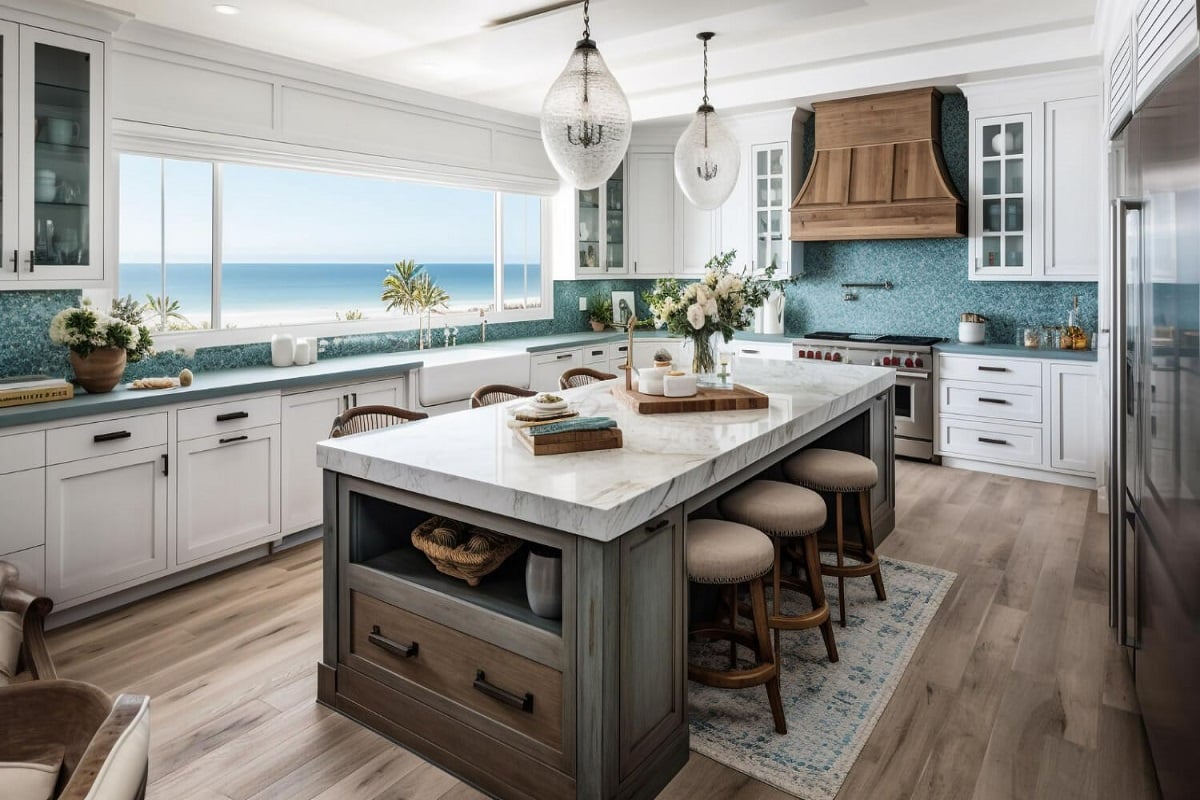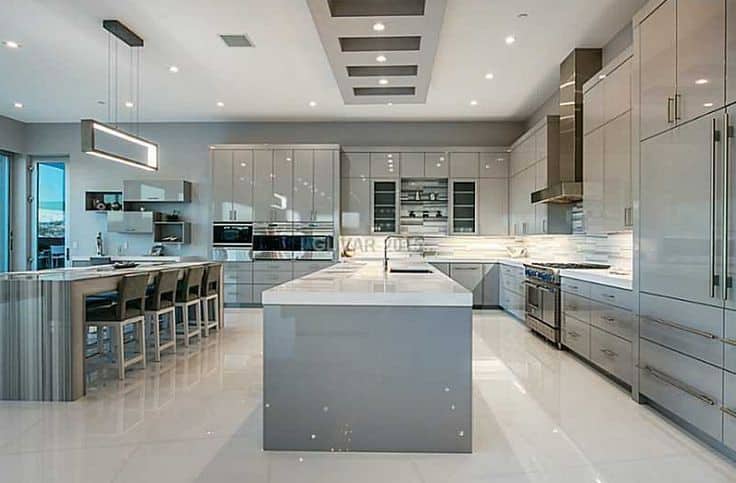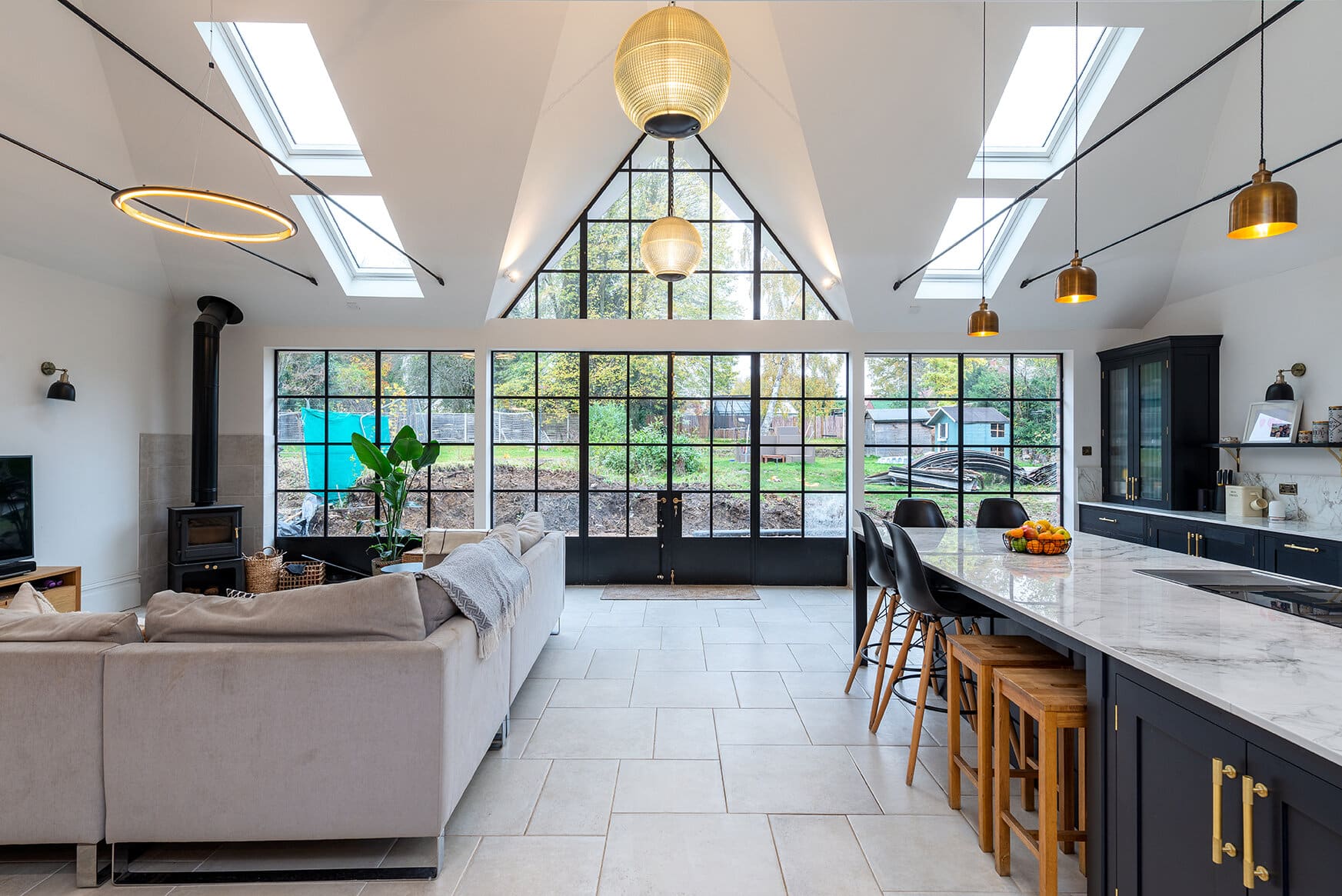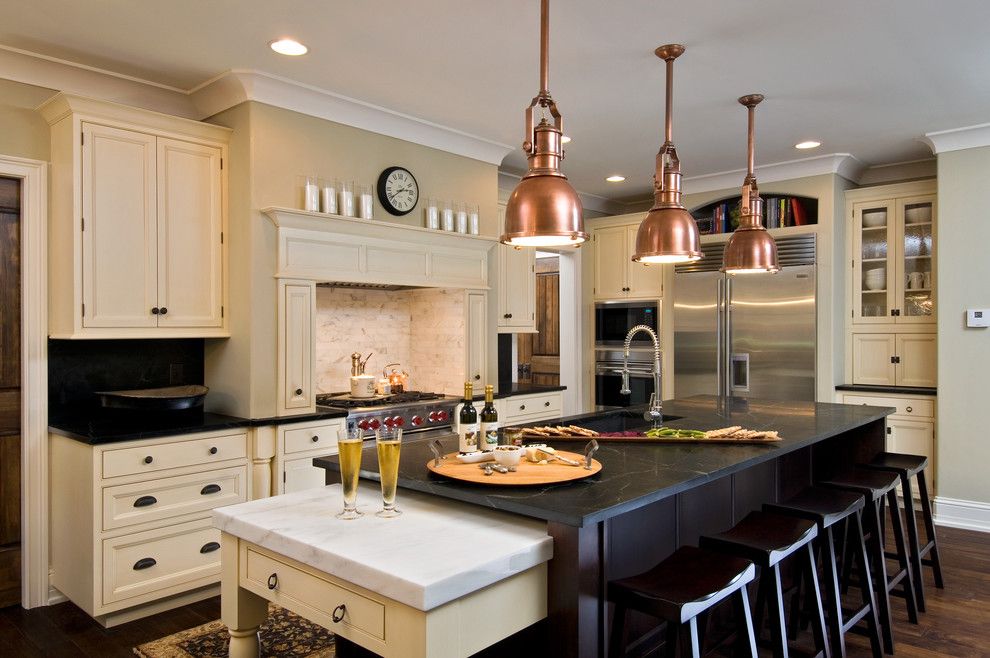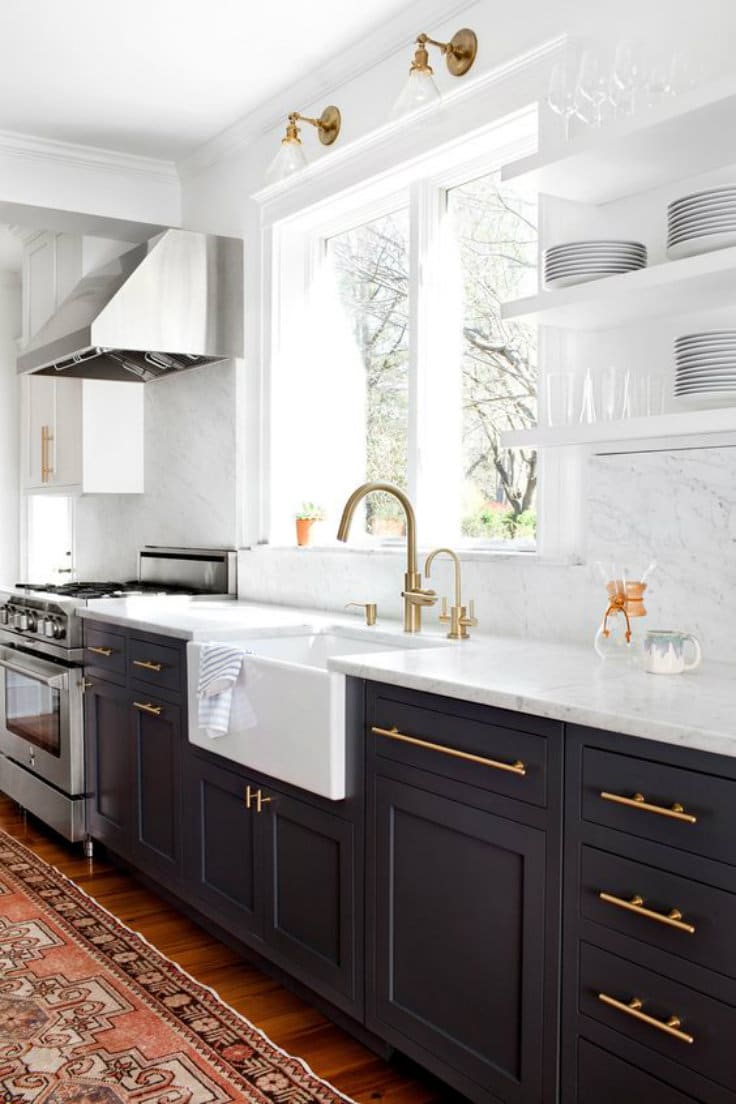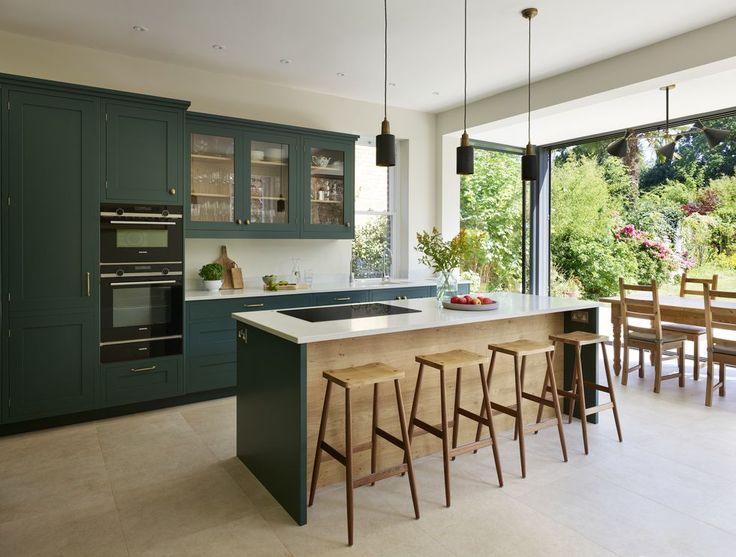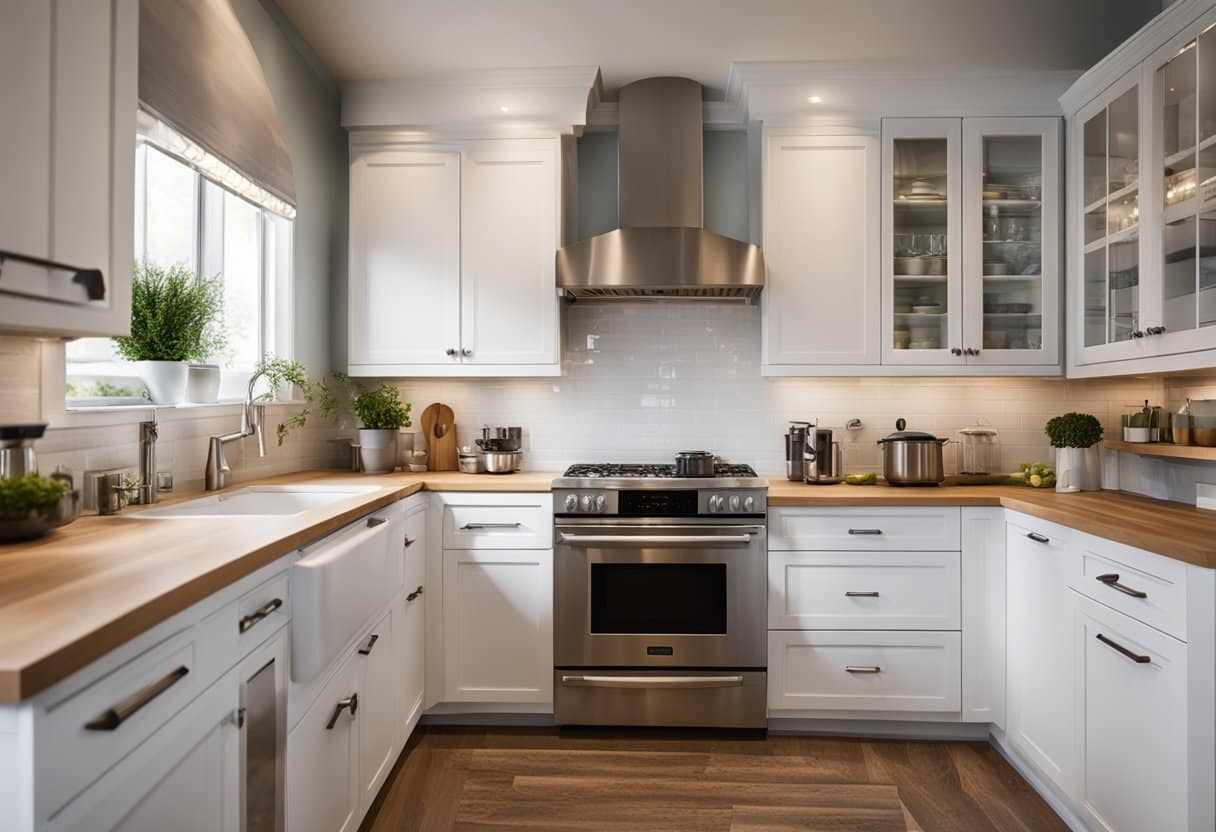Kitchen Islands: Functional and Stylish Design Solutions
The kitchen is undeniably the heart of the home, and at its centre lies a true game-changer: the kitchen island. In this article, you will find everything that there is to know about kitchen islands, from their history and background, to their cultural significance to modern kitchens, as well as what benefits and mistakes to consider when choosing and creating one. We’ll also provide practical tips on what to place on your kitchen island and how you can optimise one for the rest of your home.
What Is a Kitchen Island
A kitchen island is a freestanding, centrally located counter or workspace within the kitchen area. Its defining characteristic is that it’s not attached to the walls, which therefore allows for a 360° access.
Kitchen islands come in various shapes and sizes, from compact units perfect for small kitchens to sprawling designs for more extensive spaces. Kitchen islands typically include cabinets, drawers, and often a countertop extension for seating; these versatile additions serve several functions and purposes in the modern kitchen.
Origins of the Kitchen Island
The concept of the kitchen island began in traditional farmhouse kitchens way back in the 18th century. These early islands were designed as functional workstations used for preparing meals, preserving foods, and even providing an adequate gathering spot for family and friends. Over time, kitchen islands evolved from purely utilitarian pieces to central hubs for cooking, dining, and socialising. Today, they have become a symbol of modern kitchen design, which reflects both functionality and style.
Why Every Home Needs a Kitchen Island
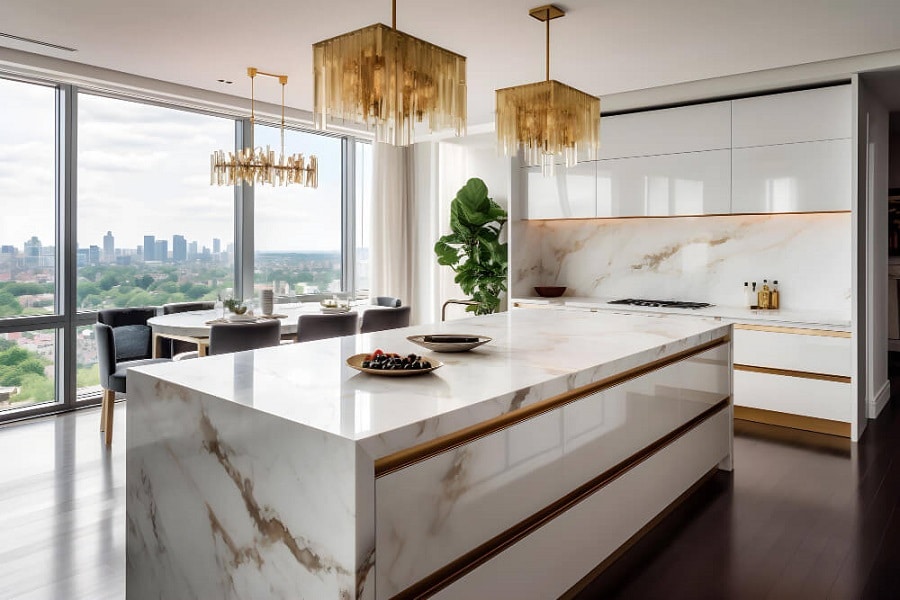
A kitchen island isn’t just a trendy addition; it’s a practical necessity for traditional and modern kitchens. Beyond aesthetics, there are compelling reasons why every home should consider integrating a kitchen island into their kitchen design.
First and foremost, a kitchen island provides and promotes additional counter space, making meal preparation more efficient, easier, and enjoyable. It also aids the overall layout and aesthetic of your kitchen, improving traffic flow and accessibility. Furthermore, a kitchen island serves as a versatile space for casual dining, homework, or even as a home office when needed. Therefore, this helps to promote interaction and connection between homeowners and guests.
Kitchen islands are not to be missed out on in modern homes, especially when you have plenty of space to integrate one. Your kitchen island can have many functions, such as hosting your stove, sink, and even an oven stove where possible (if you include the latter, be sure to include a stovetop with it too as this will prevent unwanted smells around the home).
Benefits of a Kitchen Island
There are numerous benefits for introducing a kitchen island to your home.
Firstly, it offers plenty of storage space, particularly with multiple drawers and cabinets; this will aid in reducing clutter in the main kitchen area. Furthermore, the extended countertop provides a convenient spot for food prep, cooking, and even serving meals. Moreover, a kitchen island can accommodate appliances like stovetops, sinks, or dishwashers, which will further optimise the kitchen’s functionality.
Additionally, a kitchen island will bring a sense of togetherness, as this will allow family members to interact while being preoccupied in various kitchen activities. For those who enjoy entertainment, a kitchen island serves as a perfect, natural gathering point, allowing houseguests to socialise while preparing meals. Lastly, kitchen islands will add a touch of sophistication to your kitchen’s aesthetics, elevating the overall look and feel of the space, whilst also staying in similar style to the rest of your home.
What Should You Put on a Kitchen Island
Deciding what to place on your kitchen island largely depends on your lifestyle and needs. Some common elements that homeowners like to include with their kitchen islands are:
- Cooking Appliances: Incorporating a stovetop, oven, or microwave can transform your island into a culinary powerhouse for maximum efficiency.
- Sink or Dishwasher: Simply integrate a sink or dishwasher into your kitchen island to enhance its functionality to help double down on food prep and washing up.
- Storage: Utilise drawers and cabinets for utensils, pots, and pans, or even a wine rack.
- Seating: Consider bar stools or chairs for a cosy dining area.
- Decorative Elements: Personalise your island with decorative bowls, plants, or pendant lighting.
Ultimately, it is a matter of finding what’s right for you with your kitchen island. They come in many shapes and sizes, so this allows for plenty of room to add in what you want so that it can be accessed easily and effectively. However, there are still other factors to consider when choosing and designing your kitchen island…
What Kitchen Island Mistakes to Avoid
Whilst it is easy to get carried away with designing and adding all the snazzy features for your kitchen island design, you should be wary of the following mistakes to avoid at all costs:
- Ignoring Proportions: Do not underestimate the size of your kitchen island alongside the rest of your kitchen. If it is too big or too small, this can cause problems for the rest of your kitchen space.
- Space To Move: Maintain plenty of space around your kitchen island (at least 36 inches) so that you and your guests can easily move around it.
- Inadequate Lighting: Proper lighting is crucial for the performance of your kitchen island; pendant lights or under-cabinet fixtures are great ways to shape up the functionality and style of both the island and the kitchen.
- Overcrowding: Avoid cluttering the island; too many appliances or decorative items can make it chaotic.
- Lack of Outlets: If you plan to use appliances on the island, (e.g. microwaves, ovens, tower pop up sockets, etc) ensure there are enough electrical outlets.
- Making It Fun: You should be sure to make your kitchen island look fun. After all, it is a unique feature to include in your kitchen that should be optimised to its fullest potential.
- Poor Material Choice: You should use durable, easy-to-clean surfaces for the countertop, and consider materials that match your kitchen’s style. If anything mismatches, it will easily look out of place.
- Plumbing: The plumbing side of your kitchen island design can be quite technical and complicated and, if not done right, will easily mess things up, especially when you consider the wiring and pipes needed for electrical appliances and cookers, as well as drainage.
- Not Hiring An Expert: For the everyday homeowner, it is very unlikely you will know how to design and integrate a kitchen island into the home yourself. Therefore, be sure to hire an expert to do the hard work for you, as they will assist with measuring and seeing whether you can include everything that you want in your kitchen island.
Best Kitchen Island Designs to Consider
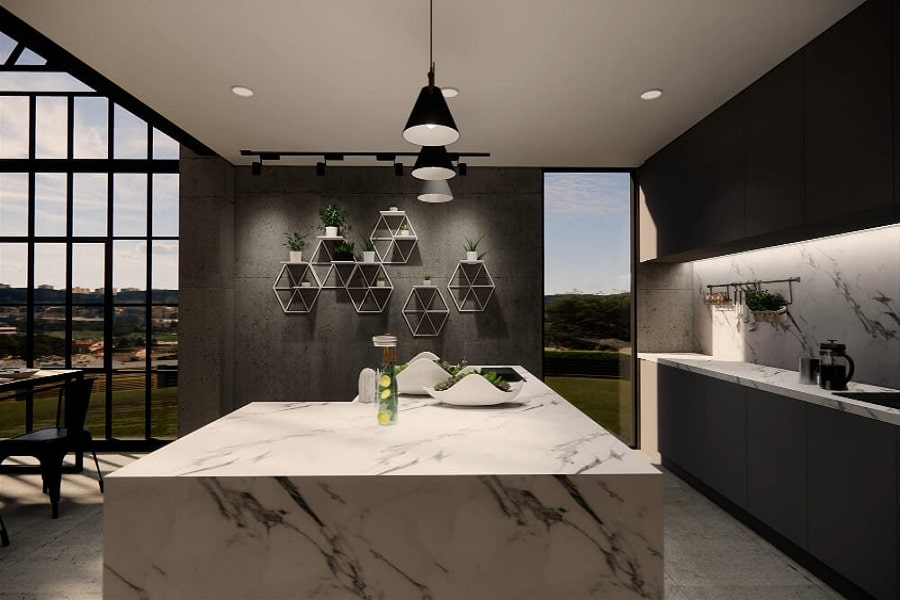
When it comes to designing your kitchen island, the possibilities are limitless. Here are some of the best kitchen island designs to consider, each offering its own unique blend of functionality and aesthetics:
Classic and Timeless:
Sometimes, a classic and timeless kitchen island design is unparalleled amongst modern day designs. A classic design features a rectangular or square shape with a durable stone countertop like granite or marble. This design often includes ornate detailing, decorative corbels, and elegant cabinet fronts.
Contemporary and Minimalist:
For a sleek and modern look, why not choose a minimalist kitchen island design. This style emphasises clean lines, a monochromatic colour scheme, and simple, unembellished surfaces. It’s perfect for those who prefer a clean and uncluttered kitchen.
Rustic and Farmhouse:
Rustic kitchen islands evoke a cosy, countryside feel. Incorporate reclaimed wood for the countertop, open shelving for a touch of authenticity, and perhaps a distressed finish for that weathered appearance. This design blends well with farmhouse and cottage-style kitchens.
Industrial Chic:
Industrial-inspired kitchen islands showcase raw materials like steel and concrete. Exposed hardware, pendant lighting with metal shades, and an open, utilitarian design contribute to an edgy, urban aesthetic.
Two-Tiered or Multi-Level:
Create visual interest and functionality with a multi-level kitchen island. The lower level can house storage or appliances, while the higher level serves as a dining or workspace. It’s an excellent choice for homes where the island serves multiple purposes.
Colourful Accents:
Add a pop of colour to your kitchen island by choosing a vibrant hue for the base cabinets. Contrasting colours can make your island a focal point in an otherwise neutral kitchen.
Custom Built-In Features:
Consider a kitchen island with custom built-in features like a wine rack, cookbook shelves, or a pull-out spice rack. Tailoring your island to your specific needs can enhance both form and function.
Waterfall Edge Countertop:
Create a striking visual effect with a waterfall edge countertop that extends vertically down one or both sides of the island. This design adds a touch of luxury and contemporary sophistication.
Remember that the best kitchen island design for your space depends on your personal style, kitchen layout, and functional requirements. Whether you prefer a classic look or a more avant-garde design, your kitchen island can serve as the centrepiece of your culinary haven, reflecting your unique taste and lifestyle. There is bound to be plenty of space in your kitchen afterwards to introduce a couple of button back chairs to it as well.
Enhance Your Home With a Kitchen Island
In summary, the kitchen island has transformed the kitchen from a humble workstation into a vital component of modern kitchen design. Its practicality, versatility, and aesthetic appeal make it a must-have for every home. By understanding its history, benefits, and challenges that may arise when you have one, you can create a kitchen island that will transform both your daily life and will become the heart of your home!
Are you thinking about shifting the style of your home? Check out these mid century design tips today.
FAQs
1. Can I just buy a kitchen island?
Yes, you can purchase a standalone kitchen island. Many furniture and kitchen supply stores offer pre-made kitchen islands in various styles and sizes. These islands typically come with countertops, cabinets, and sometimes additional features like seating. Buying a pre-made island can be a convenient option, especially if you’re looking to enhance your kitchen’s functionality and aesthetics without a full-scale renovation.
2. What is the average cost of installing a kitchen island?
The cost of installing a kitchen island can vary widely depending on factors like size, materials, and additional features. On average, you can expect to spend between up to £5,000 for a basic, pre-made island installation. However, custom-built islands with premium materials, countertops, and appliances can range from £5,000 to £15,000 or more. Costs may also include plumbing and electrical work if you’re adding features like a sink or stove. Get multiple quotes and consider your specific requirements when estimating the cost.
3. What are the downsides of kitchen islands?
While kitchen islands offer numerous advantages, there are some potential downsides to consider:
- Space Constraints: In smaller kitchens, adding an island may lead to limited space for movement, making the kitchen feel cramped.
- Installation Costs: Custom-built islands can be expensive to install, including costs for plumbing, electrical work, and materials.
- Maintenance: Depending on the materials used, kitchen islands may require regular maintenance to keep them looking their best.
- Traffic Flow: Poorly designed islands can disrupt the kitchen’s traffic flow and accessibility.
- Not Suitable for Every Layout: In some kitchen layouts, there may not be enough space to accommodate an island effectively.
4. Can you have 2 islands in a kitchen?
Yes, it is possible to have two islands in a kitchen, but it depends on the kitchen’s size and layout. Larger kitchen spaces with an open-concept design can accommodate multiple islands effectively. Two islands can provide even more workspace, storage, and seating options, making the kitchen highly functional and visually appealing.

